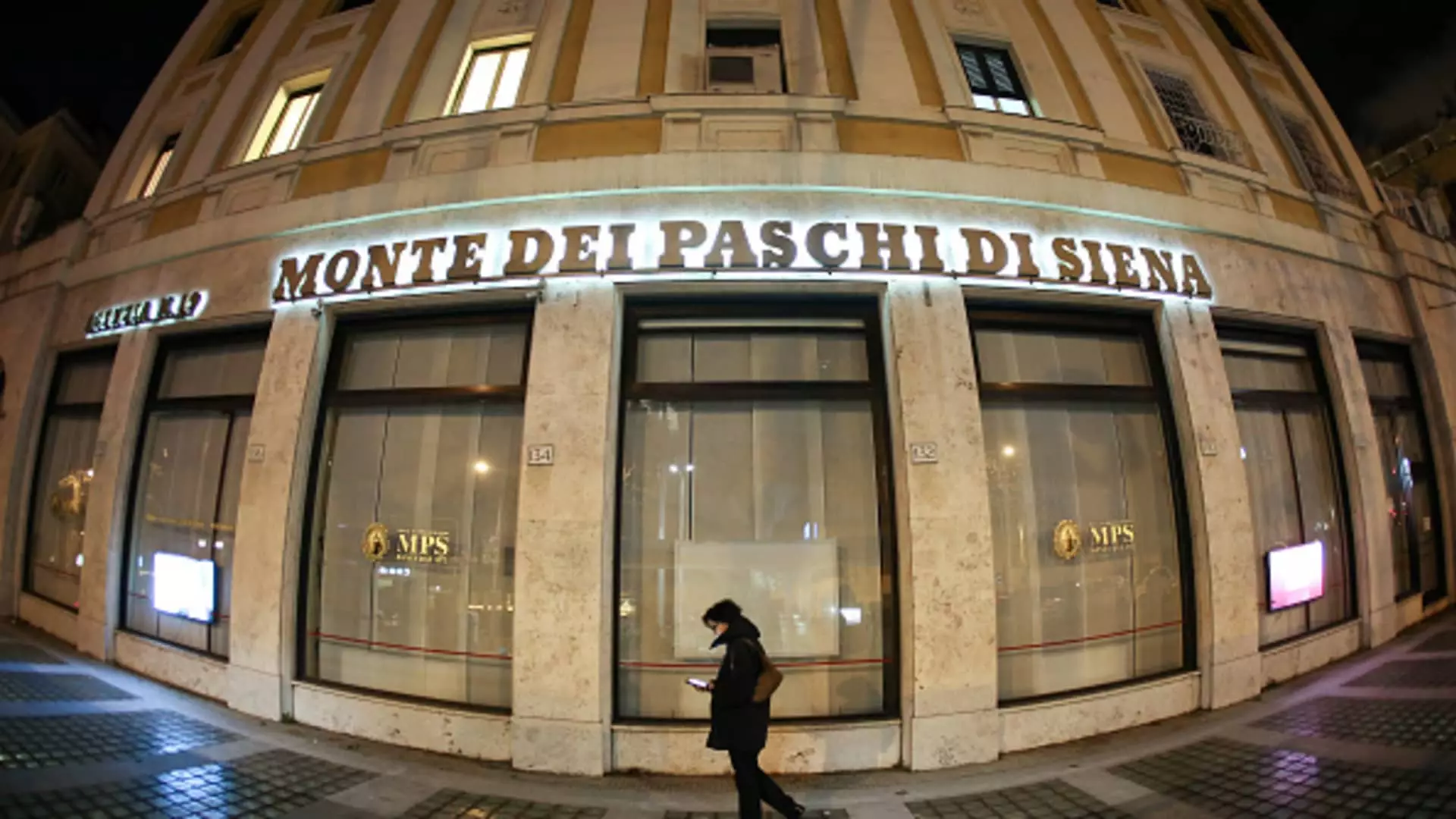In a strategic maneuver that could reshape Italy’s banking sector, Monte dei Paschi di Siena (MPS) has recently made waves with its announcement of a €13.3 billion all-share takeover bid for its larger compatriot, Mediobanca. This proposition, while ambitious, raises critical questions about its implications for the financial landscape, particularly considering MPS’s past struggles and the complexities of the current market. As we delve deeper into this development, it’s essential to assess both the context of the offer and the potential outcomes for all parties involved.
Monte dei Paschi’s proposal entails offering 23 of its shares for every 10 shares of Mediobanca. The bank has valued Mediobanca shares at approximately €15.992 each, which reflects a modest 5% premium based on Mediobanca’s closing prices in January. As of that same date, the valuation of MPS’s equity was approximately €8.7 billion, in contrast to Mediobanca’s €12.3 billion market capitalization. Such figures provoke a necessary discussion about financial viability and the premium aspect of the acquisition, particularly when both institutions are analyzing their positions amidst an evolving economic climate.
Despite the substantial numbers involved, MPS has faced critical market responses, with its shares dipping by nearly 8% following the announcement. This reaction underscores the skepticism present among investors regarding MPS’s ability to integrate and maximize the potential synergies of such a merger.
MPS’s new CEO, Luigi Lovaglio, has articulated a vision emphasizing the importance of combining the strengths of both banks to form a “new Italian champion.” By proposing this deal, MPS aims not only to capitalize on Mediobanca’s market position but also to utilize tax credits and recoverable benefits from prior losses — projected to be around €700 million annually. Yet, analysts remain cautious. According to KBW analysts Hugo Cruz and Ben Maher, the merger’s potential for synergies seems limited, raising doubts about whether MPS can effectively manage and realize the growth projected from this acquisition.
The target for finalizing the acquisition is set for September, post shareholder approval on April 17, but the inherent risks are apparent. MPS’s historical challenges following its state rescue in 2017 linger, highlighting the need for cautious optimism.
The Italian banking sector is currently witnessing a wave of mergers and acquisitions, with several banks seeking to fortify their standings amidst a backdrop of high-interest rates. While MPS has successfully paid dividends after a 13-year hiatus and boasts a solid CET1 ratio of 18.3%, the question remains whether this bid is a leap toward genuine stability or an overreaching move by a historically troubled institution.
Moreover, the involvement of major shareholders, such as harking back to the stakes held by the late Leonardo del Vecchio’s Delfin and Francesco Gaetano Caltagirone, adds another layer of complexity to this transaction. Their existing influence could affect negotiations and alignments, increasing the stakes for MPS during the transition period.
As Monte dei Paschi di Siena ventures into this bold acquisition of Mediobanca, the banking community will be closely monitoring the ramifications of this high-stakes endeavor. The transaction has the potential to reinforce MPS’s standing in a competitive sector, but not without its risks. Success hinges not only upon achieving anticipated financial hurdles but also on aligning the operational synergies of both banks. Should MPS navigate these complexities effectively, it may indeed mark a turning point in Italian banking—one that speaks to resilience and strategic foresight in the face of industry consolidation pressures. Conversely, failure to fulfill its ambitious promises could send ripples through investor confidence and the broader banking system. The coming months will be crucial in determining the real implications of this groundbreaking bid.

